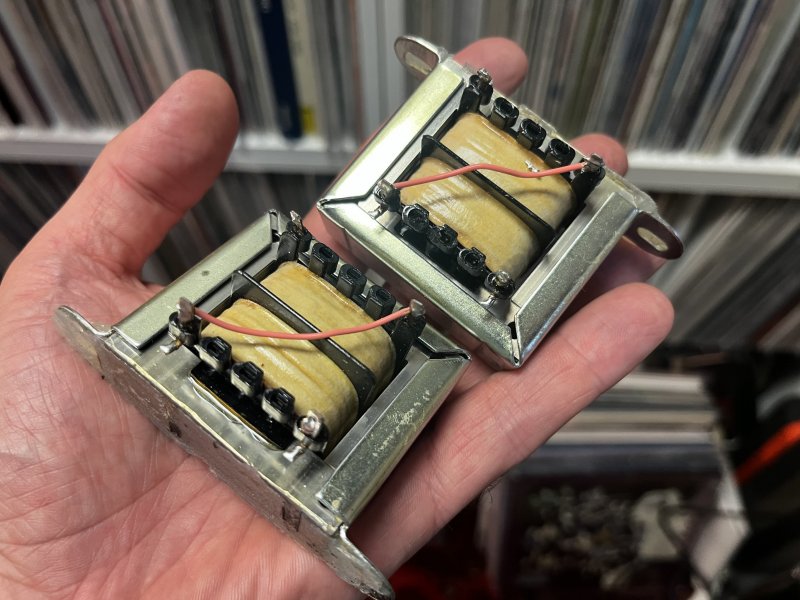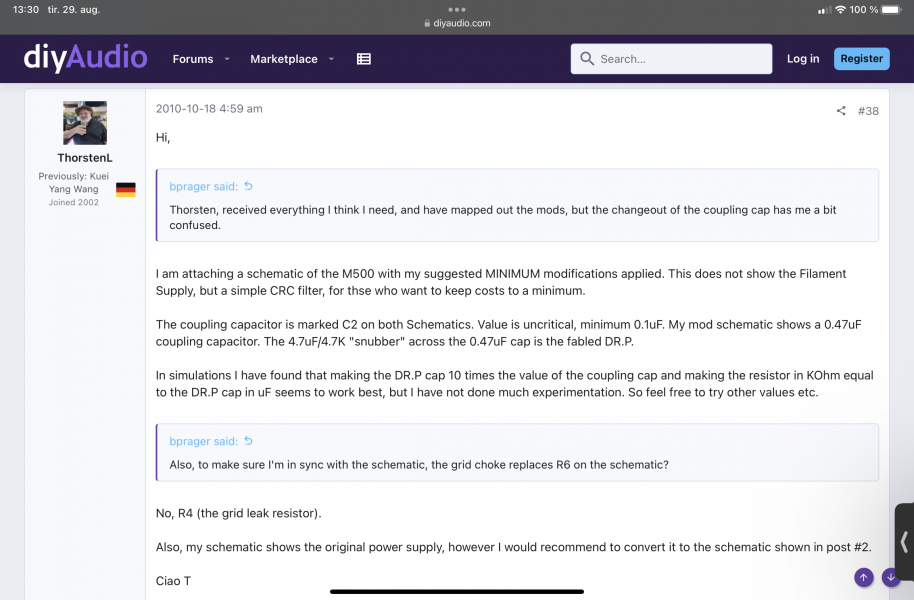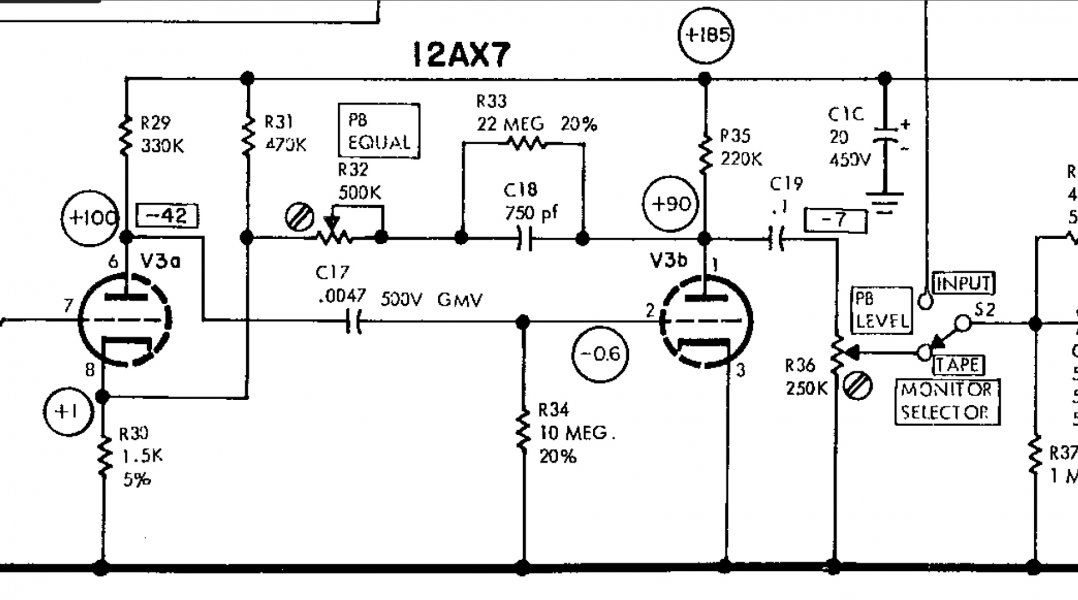exceptional quality. you can recognize them by the f 32 number (picture 4)on the glass.Looks nice
SET amp owners thread
- Thread starter bonzo75
- Start date
You are using an out of date browser. It may not display this or other websites correctly.
You should upgrade or use an alternative browser.
You should upgrade or use an alternative browser.
Well the 1955 Valvo metal base is considered to be THE GZ34...not that others aren't really good...I am sure the one you mention is great.exceptional quality. you can recognize them by the f 32 number (picture 4)on the glass.
Does Amplifon have a US distributor? How much does the Amplifon SET42SE retail for in USD?First listening impressions of the SATI amp are that it is quite open and transparent. Perhaps a bit less heft than the Amplifon but bass is solid and detail is very good. Soundstage also sounds promising with good depth and layering. Not sure yet about Macro dynamics because of forced low listening levels but microdynamics and dynamic shading is at least very good. Until I can do a good comparison it will be hard to say if it is better or worse than the Amplifon but it is not obviously inferior at this point, unlike a few of the other recent amps that were in-house.
Not to my knowledge. They are a very small (as in 1 man) company and we deal through the German distributor.Does Amplifon have a US distributor? How much does the Amplifon SET42SE retail for in USD?
Both chokes in place. Leif told med to give them 50 hours before serious listening. In the meantime the Hørning OPTs are getting prepared.
View attachment 114858View attachment 114859
Drove by Leifs today and picked up two more S&B chokes. These will replace the grid leak resistor for the 300b. With new Tent labs regulator and changing a few caps Leif identified as sub standard, we are slowly getting there.

I've not heard of this before. How is that supposed to work? Does your driver circuit have enough guts to drive the impedance of the choke? What value are they at 20Hz?Drove by Leifs today and picked up two more S&B chokes. These will replace the grid leak resistor for the 300b. With new Tent labs regulator and changing a few caps Leif identified as sub standard, we are slowly getting there.
I've not heard of this before. How is that supposed to work? Does your driver circuit have enough guts to drive the impedance of the choke? What value are they at 20Hz?
Don't know. I am just following the list of upgrades for these amps given by the designer behind, Thorsten Loesch. This is just one of many upgrades.
It might be worth finding the answers to my questions! Are you going to do the work yourself?Don't know. I am just following the list of upgrades for these amps given by the designer behind, Thorsten Loesch. This is just one of many upgrades.
He isIt might be worth finding the answers to my questions! Are you going to do the work yourself?
FWIW dept.: Not knowing what the stuff does and/or how and working on it yourself is usually Bad Idea.
I might have to ask Thorsten how that works. Using a choke as a 'grid leak' sounds iffy to me. At the very least it would likely introduce a layout problem, making the circuit more susceptible to noise pickup.
For clarity's sake, a 'grid leak' resistor is a very specific thing. Usually a 300b would not use such a means of biasing. With a grid leak resistor, the cathode can be grounded directly. The idea is that the grid leak resistance is so high that the tiny grid current that always exists is enough to develop a voltage across the resistor. So with an excess of electrons in the grid, the tube is biased with the grid negative with respect to the cathode, the way its supposed to be.
This technique is usually used with indirectly heated small power tubes, usually some kind of pentode, in a circuit where every half penny spent on it was a big deal. Its inexact at best.
So now with that didactic diversion out of the way, we can properly describe the chokes as being 'grid resistors' or 'grid bias resistors'. FWIW, a typical grid resistor for a 300b might be 200K Ohms, which seems a bit high for something like that to be done with a choke. Chokes tend to have a low DC resistance, with impedance rising with frequency... Occam's Razor being what it is, my surmise is the chokes are for something else. A much more common use of them in SET circuits is as a plate load, for coupling between stages.
I might have to ask Thorsten how that works. Using a choke as a 'grid leak' sounds iffy to me. At the very least it would likely introduce a layout problem, making the circuit more susceptible to noise pickup.
For clarity's sake, a 'grid leak' resistor is a very specific thing. Usually a 300b would not use such a means of biasing. With a grid leak resistor, the cathode can be grounded directly. The idea is that the grid leak resistance is so high that the tiny grid current that always exists is enough to develop a voltage across the resistor. So with an excess of electrons in the grid, the tube is biased with the grid negative with respect to the cathode, the way its supposed to be.
This technique is usually used with indirectly heated small power tubes, usually some kind of pentode, in a circuit where every half penny spent on it was a big deal. Its inexact at best.
So now with that didactic diversion out of the way, we can properly describe the chokes as being 'grid resistors' or 'grid bias resistors'. FWIW, a typical grid resistor for a 300b might be 200K Ohms, which seems a bit high for something like that to be done with a choke. Chokes tend to have a low DC resistance, with impedance rising with frequency... Occam's Razor being what it is, my surmise is the chokes are for something else. A much more common use of them in SET circuits is as a plate load, for coupling between stages.
how big is the coupling capacitor in front of the grid of the 300b? if it's too small you'll get a subsonic peak. this will drive your outputtransformer into saturation. THD% will rise mightily in the bass. rather take 210k resistor.
FWIW dept.: Not knowing what the stuff does and/or how and working on it yourself is usually Bad Idea.
I might have to ask Thorsten how that works. Using a choke as a 'grid leak' sounds iffy to me. At the very least it would likely introduce a layout problem, making the circuit more susceptible to noise pickup.
For clarity's sake, a 'grid leak' resistor is a very specific thing. Usually a 300b would not use such a means of biasing. With a grid leak resistor, the cathode can be grounded directly. The idea is that the grid leak resistance is so high that the tiny grid current that always exists is enough to develop a voltage across the resistor. So with an excess of electrons in the grid, the tube is biased with the grid negative with respect to the cathode, the way its supposed to be.
This technique is usually used with indirectly heated small power tubes, usually some kind of pentode, in a circuit where every half penny spent on it was a big deal. Its inexact at best.
So now with that didactic diversion out of the way, we can properly describe the chokes as being 'grid resistors' or 'grid bias resistors'. FWIW, a typical grid resistor for a 300b might be 200K Ohms, which seems a bit high for something like that to be done with a choke. Chokes tend to have a low DC resistance, with impedance rising with frequency... Occam's Razor being what it is, my surmise is the chokes are for something else. A much more common use of them in SET circuits is as a plate load, for coupling between stages.
This is what TL writes about changing the grid leak resistor to a grid choke.

I haven’t looked at the schematic but I am pretty sure from the comments here that Thorsten misspoke when he called it a “grid leak resistor.” It’s really a grid load resistor. As @Atmasphere said, a grid leak resistor is a specific application where a very high value resistor (a few Meg) is used between grid and ground, and the cathode is connected directly to ground. The grid leak resistor allows a bias voltage to develop on the grid.
A grid choke can be substituted for the grid load resistor provided the inductance is high enough. Some people claim a grid choke sounds better. I only tried a grid choke once and I used MagneQuest’s top model which had very high inductance. However, in the 300B amps I was using back then, I preferred the sound with a resistor. The particular type of resistor used on the grid makes a big difference sonically so it’s hard to generalize. I don’t recall what resistor I ended up using but it may have been an Audio Note tantalum. That was 15 years ago so I don’t recall the details.
A grid choke can be substituted for the grid load resistor provided the inductance is high enough. Some people claim a grid choke sounds better. I only tried a grid choke once and I used MagneQuest’s top model which had very high inductance. However, in the 300B amps I was using back then, I preferred the sound with a resistor. The particular type of resistor used on the grid makes a big difference sonically so it’s hard to generalize. I don’t recall what resistor I ended up using but it may have been an Audio Note tantalum. That was 15 years ago so I don’t recall the details.
The schematic is that of the classic 351 electronics.For some reason, Ampex was very fond of using grid leak resistors ('contact bias') on their professional tape recorders. It wasn't a matter of cost reduction because these machines were used in professional recording studios and cost a fortune. Go figure.
I think they did that for the LF timing constant. I imagine they wanted to minimize phase shift in the audio band.
This is what TL writes about changing the grid leak resistor to a grid choke.
Do you have a link for that? I'd like to see the schematic.
That's the 602 series, but the 351 was the same. The way it was explained to me by one of the old time Ampex engineers is that they wanted to squeeze as much gain as possible out of that tube to simplify the circuit. The 354 went to more extreme thinning-down of components, and parasitic oscillations were a problem as a result. So I guess It was penny pinching on some level, but Ampex was never great with their vacuum tube electronics - they were much better with their mechanicals.The schematic is that of the classic 351 electronics.
I think they did that for the LF timing constant. I imagine they wanted to minimize phase shift in the audio band.
Always happy to see a thread over here drift into DIY... thanks for the links and info.
Was just thinking about the now many SE amps I have owned or reviewed and the list is getting pretty long. All of them were at least good to very good but I can attempt a ranking of sorts.
1. Aries Cerat Diana Integrated
2. Aries Cerat Genus integrated
3. Aries Cerat Diana Forte + Impera pre (not sure why I preferred the integrateds above…but I did )
4. Silvercore Silberglut 2A3 (on Horning speakers) surprise hit! Super transparent
5. Amplifion SET 42se (on Odeons…down 2 places on Hornings) An amp I respect more than love
6. Horning SATI 520b. With good rectifier and input tubes. On Horning speaker I put above the Anplifon
7. KR Audio DM monos
8. Ayon Crossfire iii …will try again soon and might move up.
9. Ayon Vulcan Evo monos
10. KR Audio VA350i…was my mainstay for many years
11. NAT Symbiosis SE…before full warmup it goes at the bottom after 2+ hours of continuous play it goes up a couple spots…Strange amp
12. Ayon Helios
13. Wall Audio M50 monos
13. Ayon Soark mk1
14. LadyDay LD+ 300 b monos
15. JJ322 300b PSET
16. MasterSound Dueundici
17. Cary CAD572se
18 AmareMusica Entropy Diamond…so promising design…so boring sound by comparison
1. Aries Cerat Diana Integrated
2. Aries Cerat Genus integrated
3. Aries Cerat Diana Forte + Impera pre (not sure why I preferred the integrateds above…but I did )
4. Silvercore Silberglut 2A3 (on Horning speakers) surprise hit! Super transparent
5. Amplifion SET 42se (on Odeons…down 2 places on Hornings) An amp I respect more than love
6. Horning SATI 520b. With good rectifier and input tubes. On Horning speaker I put above the Anplifon
7. KR Audio DM monos
8. Ayon Crossfire iii …will try again soon and might move up.
9. Ayon Vulcan Evo monos
10. KR Audio VA350i…was my mainstay for many years
11. NAT Symbiosis SE…before full warmup it goes at the bottom after 2+ hours of continuous play it goes up a couple spots…Strange amp
12. Ayon Helios
13. Wall Audio M50 monos
13. Ayon Soark mk1
14. LadyDay LD+ 300 b monos
15. JJ322 300b PSET
16. MasterSound Dueundici
17. Cary CAD572se
18 AmareMusica Entropy Diamond…so promising design…so boring sound by comparison
This is only my opinion of course but we also had the Lamm amps here as well. I thought the Viva to be the better amp.
What did you prefer about the Aurora over the Lamm?
More transparent, wider bandwidth, that sort of thing. The Viva brought out more of what was on the recording. We had a set of our M-60s on hand for that comparison as well.What did you prefer about the Aurora over the Lamm?
Similar threads
- Replies
- 16
- Views
- 2K
- Replies
- 4
- Views
- 976
- Replies
- 0
- Views
- 648
- Replies
- 15
- Views
- 1K
| Steve Williams Site Founder | Site Owner | Administrator | Ron Resnick Site Owner | Administrator | Julian (The Fixer) Website Build | Marketing Managersing |
















